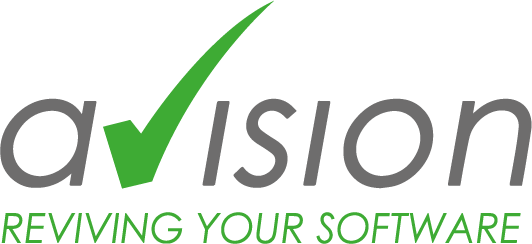When an IT service provider takes over the support of legacy software, there are many things they can do wrong. Avision shows how to reliably mess up the takeover.
Companies often hand over the support of legacy software to an IT service provider so that they can concentrate on their core business while the service provider takes over the maintenance, security and modernisation of the software. Sometimes, however, they also hand over the support from one service provider to another because the previous one no longer wants to continue the contract or because they are dissatisfied with them.
Either way, if an IT service provider takes over the support of legacy software, there are a number of things they can do wrong. Avision highlights what they should definitely do if they want to make the takeover a failure.
Build a monopoly of expertise
A single person familiarises themselves with the new system and is very good at it. They are clever and experienced, make rapid progress and don’t need to consult with anyone. It doesn’t matter that no one else is familiar with the system. After all, this person will work here forever.
Avoid subject matter experts
Exchanging information with subject matter experts is overrated and costs an unnecessary time. It’s better to do without it. Otherwise you would end up speaking the same language as them.
Ignore the framework
You focus entirely on programming the software. How is the system set up? How does the deployment work? Such framework conditions can be safely ignored. Then you can fix bugs but you can’t roll out the fixes.
Disregarding testing expertise
The IT service provider sets up a completely new test system and does not use existing systems. This means that only the expertise that has been incorporated into the test cases and systems in the past is lost. Or the service provider does not use a test system at all. This is of course also an option.
Ignoring productive operations
Why should you look at the application in production? Then you could programme better and gain user acceptance, but so what: they’ll just have to make do with what you’ve programmed.
Dawdling
It’s best to wait until all the information is complete before you really get started. Then the actual transition phase is nicely concise. Learning a new software and taking it into operation – surely that can be done in two weeks!
Reject help from the old service provider
We got the job, which means we are better. We don’t ask the old service provider for advice. Even if they are more familiar with the software than we are, have been in charge of it for many years or may have even developed it themselves.
‘Building up knowledge monopolies, not familiarising themselves with the productive operation of the software or being too proud to accept help from their predecessors: IT service providers should avoid such mistakes at all costs,’ explains Nadine Riederer, CEO of Avision. ’Otherwise, the next takeover will soon be on the cards – and by another service provider.’
This press release is also available at www.pr-com.de/de/avision.
Press contact
Avision GmbH
Christina Karl
Marketing
Bajuwarenring 14
D-82041 Oberhaching
Phone +49-89-623037-967
christina.karl@avision-it.de
PR-COM GmbH
Melissa Gemmrich
Sendlinger-Tor-Platz 6
D-80336 Munich
Phone +49-89-59997-759
melissa.gemmrich@pr-com.de



